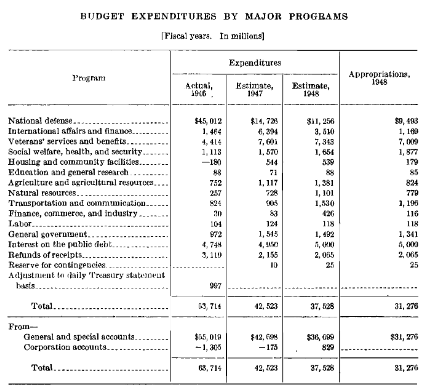Peak Fact-Checking?
Not every argument can be tested on a Pinocchio scale.

While granting that his columns can sometimes be legalistic and pedantic, I’m generally a fan of Glenn Kessler’s work as public fact-checker for the Washington Post. His latest column, “Manchin’s ‘historic context’ for spending is using the wrong metric,” is, alas, rather silly.
Jake Sherman of Punchbowl News tweeted that Manchin “is carrying a card with what Democrats have done. He says Dems don’t talk about it enough.” He included photos of the front and the back of the card, which listed various votes on major legislation.
But what caught our attention was the back of the card, which highlighted “historic context.” The card said that Congress has provided $5.4 trillion in response to the coronavirus pandemic and another $1.2 trillion through the infrastructure deal.
“That’s $6.6 trillion Congress has already provided above and beyond annual appropriations over the past 20 months,” the card said, before making the comparison with inflation-adjusted numbers for the Marshall Plan and World War II.
The point seems to be that Congress has already spent well above those amounts. But Manchin’s card is using the wrong metric.
So, first off—as Kessler himself eventually all but acknowledges—it’s rather absurd to bother fact-checking something on a notecard that Manchin is carrying until and unless he has used that factoid in some public fashion. One might as well fact-check a book he’s carrying.
As to the “fact-check” itself:
On one level, inflation-adjusted numbers make sense. After all, it’s a direct comparison of dollar amounts.
But if Manchin is looking for historical context at the distance for more than five decades, he should really examine the spending on the Marshall Plan and World War II as a percentage of the overall economy, better known as the gross domestic product (GDP). This measurement — in contrast to inflation-adjusted dollars — really puts in perspective the burden these programs placed on the U.S. government.
That’s why the historical tables of the White House budget office offers percentage of GDP as a key measure over time for federal programs.
The Marshall Plan, officially called the European Recovery Program, was first articulated by Secretary of State George C. Marshall in a 1947 speech at Harvard University as a response to Communist expansion in Europe after World War II. After Marshall’s speech, Congress passed the Economic Cooperation Act in 1948 and approved funding that has been estimated at between $10.3 billion and $13.6 billion. The biggest recipients were the United Kingdom, France, West Germany, Italy and the Netherlands.
The upper range of that estimate, using the Bureau of Labor Statistic inflation calculator, would be about $150 billion in today’s dollars.
But the Marshall Plan spending was between 3.7 percent and 5 percent of GDP at the time (about $275 billion in 1948). With U.S. GDP now about $23 trillion, that would be the equivalent of about $850 billion to $1.1 trillion.
In other words, those numbers are significantly higher than $150 billion.
As for World War II, Manchin offers inflation-adjusted spending of $4.5 trillion. But defense spending was 16 percent of GDP in 1942, 32 percent of GDP in 1943, 36 percent of GDP in 1944 and 37 percent of GDP in 1945. If we assume an average annual GDP of about $20 trillion for the last four years, that translates into the equivalent of $24 trillion today being spent on the war.
We sought a comment from Manchin’s press secretary but did not get a response.
One suspects it would consist of two words, one of them rather unkind.
What Kessler is engaging in here is not a fact-check. He quickly acknowledges that the “facts” are not in dispute. Rather, he’s arguing that percentage of GDP would be a better metric than inflation-adjusted spending. I can preach that one either way but, regardless, it’s an opinion. There is, so far as I’m aware, no settled metric within the social sciences or the US Government for comparing spending decades apart.
We see both of these measures used in defense spending debates. Those who want to see the Defense budget cut will argue that we’re actually spending more in inflation-adjusted dollars now than we did during (pick one) World War II, the peak of the Vietnam War, or the height of the Cold War. Those who want to see it raised will argue that we can afford it because it takes up a much smaller share of GDP. Neither is right or wrong.
We also use percentage of GDP as an informal metric within NATO, where Allies have agreed to spend X percentage (once 3%, not 2%) on defense. Most have consistently fallen short. While the rationale is obvious—it’s a means of allocating burden among countries with vastly differing resources—but many agree that it’s problematic. Greece and Croatia are two of the highest contributors on that metric but, in raw terms, they contribute next to nothing. Germany is a continual laggard, consistently falling short of the 2% threshold, but contributes the third-highest share.
But, again, there are facts and disputes over how to deploy them in the debate.
In terms of the comparison in question—US spending toward the Marshall Plan vs the Build Back Better plan—I’m not sure either inflation-adjusted dollars or percentage of GDP are all that useful. It’s odd to compare money we spent bolstering Western allies in the wake of a world war and money we’re proposing to invest in the social welfare of our own citizens today.
Even in 1948, the Marshall Plan was a tiny fraction of what we were spending on national defense and considerably less than we were spending on social welfare programs:

If, for some odd reason, we need to compare 1948 and 2021, at least do it along programmatic lines.






While I’m less impressed generally with Kessler than you, I agree with this post. Fact checking Manchin’s note card is a silly thing to do even without getting into a swamp of real dollars v percent of GDP v whatever. But I caution you that this habit of dumping on pointless news stories that don’t support their own premises could easily get out of hand and come to dominate your life.
I would note that the article seems to be more in a policy advocation vein–for all the reasons mentioned ahead of this comment–than it seems to be fact checking. Long term damage from this mistake: it diminishes the validity of Kessler as an impartial observer and gives opponents a single example of wrong from an authoritative source to continually use as “an example of what’s going on in general.” In other words, he’s provided the right with another cudgel–much like the rather badly written and overwrought Atlantic article about cultural appropriation of fake bahn mi and fried rice brought out (again–[sigh]) yesterday.
I stopped reading the Washington Post fact checking column years ago because I found not only that this type of thing was not an anomaly, but also usually done against a Democrat. And, in fact, it goes farther, frequently flipping the script and performing the same exercise of special pleading to justify why an out and out Republican lie should be downgraded a Pinocchio or two (or whatever system it uses). I don’t think they do this out of a preference for one party or another. Rather, they are essentially a “home town” paper, where the game is politics and they essentially have a home team in each league. For years they were scrupulously careful to always balance the numbers and offset every negative story with a positive one, or never stating the truth or falsehood of a completely knowable fact but always limiting the reporting to what Democrats said about that fact, and then the Republicans. They were so bad at this I gave up reading them for a couple of decades. To their credit they changed their editorial policy when Trump was nominated, and I finally renewed my subscription. But, as the home town paper to the political class, the “No bias” bias bent is baked in, and I’m sure they will eventually return to their past ways.
@MarkedMan: Yeah. Since Bezos they seem to have improved. They still, like NYT, see themselves as the voice of the Establishment. The meritocrats (many hereditary) with whom they have cocktails. The famous socially liberal but fiscally conservative crowd. Even the Democrats. But WAPO has seemed actually better than FTFNYT. I subscribe to both even though they both regularly piss me off. “Unemployment claims are at a historic low, unemployment has dropped like a rock to 4.2, but the Biden economy still looks really shaky.” sort of stuff.